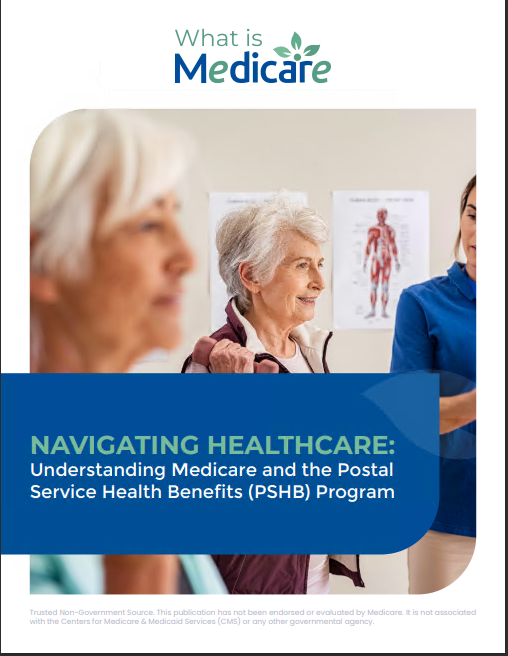Key Takeaways:
-
Medicare’s changes in 2025 simplify your prescription drug costs with the elimination of the donut hole and a $2,000 annual out-of-pocket cap under Part D.
-
You now have access to new payment options, making it easier to manage prescription expenses throughout the year.
Understanding the 2025 Prescription Drug Cost Landscape
Navigating Medicare can be challenging, but 2025 brings significant updates designed to make managing your prescription drug costs easier. From the elimination of the coverage gap to a fixed out-of-pocket cap, these changes aim to reduce financial stress and improve affordability for millions of beneficiaries. Let’s dive into what’s new and how these updates might impact you.
The Donut Hole Is Gone – Here’s What It Means for You
One of the most significant updates for 2025 is the elimination of the Medicare Part D coverage gap, commonly known as the donut hole. In previous years, you might have faced higher costs for prescriptions after reaching a certain spending threshold. Now, that’s a thing of the past.
What Does This Change Look Like?
Medicare Part D now has three simplified phases:
-
Deductible Phase: You pay for your prescriptions until you reach your plan’s deductible (up to $590 in 2025).
-
Initial Coverage Phase: You and your plan share the cost of your prescriptions, with co-pays or coinsurance.
-
Catastrophic Coverage Phase: Once your out-of-pocket expenses hit $2,000, your plan covers 100% of your covered prescription drug costs for the rest of the year.
This change ensures your costs are predictable and capped, eliminating the mid-year financial surprises that came with the donut hole.
The $2,000 Out-of-Pocket Cap: A Game-Changer for Your Budget
For the first time, Medicare Part D includes a $2,000 annual out-of-pocket cap. This means you won’t spend more than $2,000 on covered prescriptions in a calendar year, no matter how high your medication costs might be.
Why Is This Important?
In the past, prescription costs could continue to mount throughout the year, especially for those needing expensive medications. Now, once you reach the $2,000 limit, you’re financially protected. This update is particularly beneficial for those managing chronic conditions or requiring high-cost specialty drugs.
How Does It Work?
Once your total out-of-pocket spending on prescriptions reaches $2,000, you transition into the catastrophic coverage phase. Your Medicare Part D plan then covers 100% of your medication costs for the remainder of the year. This cap applies to all Medicare Part D plans, ensuring consistency across the board.
Flexible Payment Options: Spreading the Costs
Another 2025 update is the introduction of the Medicare Prescription Payment Plan. This allows you to spread out your prescription drug costs over the year, rather than paying large amounts all at once.
What Are the Benefits?
-
Improved Budgeting: Instead of unpredictable, high costs in one month, you can break them into manageable, monthly payments.
-
Accessible to Many: This option is available to most Part D enrollees, offering flexibility based on individual financial situations.
This payment plan helps you avoid financial strain, particularly if you hit the $2,000 out-of-pocket cap early in the year.
Reviewing Your Annual Notice of Change (ANOC)
Each year, your Medicare Part D plan sends an Annual Notice of Change (ANOC) before the Open Enrollment period. This document outlines any changes to your plan’s costs, coverage, and rules for the upcoming year.
Why Is the ANOC Critical?
With the new 2025 updates, it’s more important than ever to review your ANOC carefully. Look out for:
-
Updated Coverage Details: Ensure your medications are still covered.
-
Cost Adjustments: Check how the new $2,000 cap and deductible apply to your plan.
-
Formulary Changes: Confirm that your prescriptions remain on your plan’s formulary (list of covered drugs).
Taking the time to review your ANOC ensures you’re fully informed about your plan’s specifics and can make changes if needed.
Open Enrollment: Your Window to Make Changes
The Medicare Open Enrollment period, which runs from October 15 to December 7 each year, is your opportunity to review and change your Medicare Part D or Medicare Advantage plan. If your current plan no longer meets your needs, this is the time to explore other options.
Key Tips for Open Enrollment:
-
Compare Plans: Use Medicare’s online tools to compare Part D plans based on cost, coverage, and pharmacy networks.
-
Check for Extra Benefits: Some plans may offer additional features, such as mail-order pharmacy services.
-
Keep an Eye on Costs: Look beyond premiums; consider deductibles, copays, and out-of-pocket maximums.
By taking advantage of Open Enrollment, you can ensure you’re enrolled in the plan that best fits your prescription needs and budget.
Understanding Cost Phases in 2025
Medicare Part D plans operate on a cost-sharing model, and understanding each phase helps you anticipate your expenses throughout the year. Here’s a closer look:
1. Deductible Phase
During this phase, you’ll pay the full cost of your prescriptions until you meet your plan’s deductible, which can be as high as $590. This amount resets each January.
2. Initial Coverage Phase
Once you’ve met your deductible, your plan shares the cost of your prescriptions with you. You’ll pay a copay or coinsurance for each medication, depending on your plan’s terms.
3. Catastrophic Coverage Phase
After reaching the $2,000 out-of-pocket cap, you’re fully covered for all your medications for the rest of the year. This phase offers peace of mind, knowing your prescription costs won’t exceed a manageable limit.
Maximizing Savings With Preventive Care
One way to manage your overall healthcare costs is by focusing on preventive care. Many Medicare plans, including Part D, cover certain preventive medications and services at no additional cost to you.
What Should You Consider?
-
Annual Wellness Visits: These can help catch potential health issues early.
-
Generic Medications: Opt for generics when available, as they’re often much cheaper than brand-name drugs.
-
Pharmacy Choice: Some plans offer preferred pricing at specific pharmacies, so check your plan’s network.
By staying proactive about your health, you can reduce the need for costly treatments and prescriptions later on.
Resources to Help You Stay Informed
Understanding Medicare’s updates can feel overwhelming, but there are resources to guide you. Here are some ways to stay on top of your options:
-
Medicare Plan Finder: Use this tool to compare Part D plans and estimate your prescription costs.
-
State Health Insurance Assistance Programs (SHIPs): These offer free, personalized counseling to help you navigate your Medicare choices.
-
Customer Support: Reach out to your plan’s customer service for clarification on costs, coverage, and payment options.
Taking advantage of these resources ensures you’re making informed decisions about your healthcare coverage.
Planning for the Year Ahead
The changes to Medicare in 2025 are designed to simplify your prescription drug costs and provide greater financial protection. By understanding the updates, reviewing your plan annually, and utilizing available resources, you can take control of your healthcare expenses and focus on what matters most—your health and well-being.
Keeping Prescription Costs Manageable in 2025 and Beyond
Medicare’s 2025 updates are a big step forward in simplifying prescription drug costs and reducing financial barriers. By staying informed, reviewing your options, and planning for the year ahead, you can ensure your healthcare needs are met without unexpected expenses.










